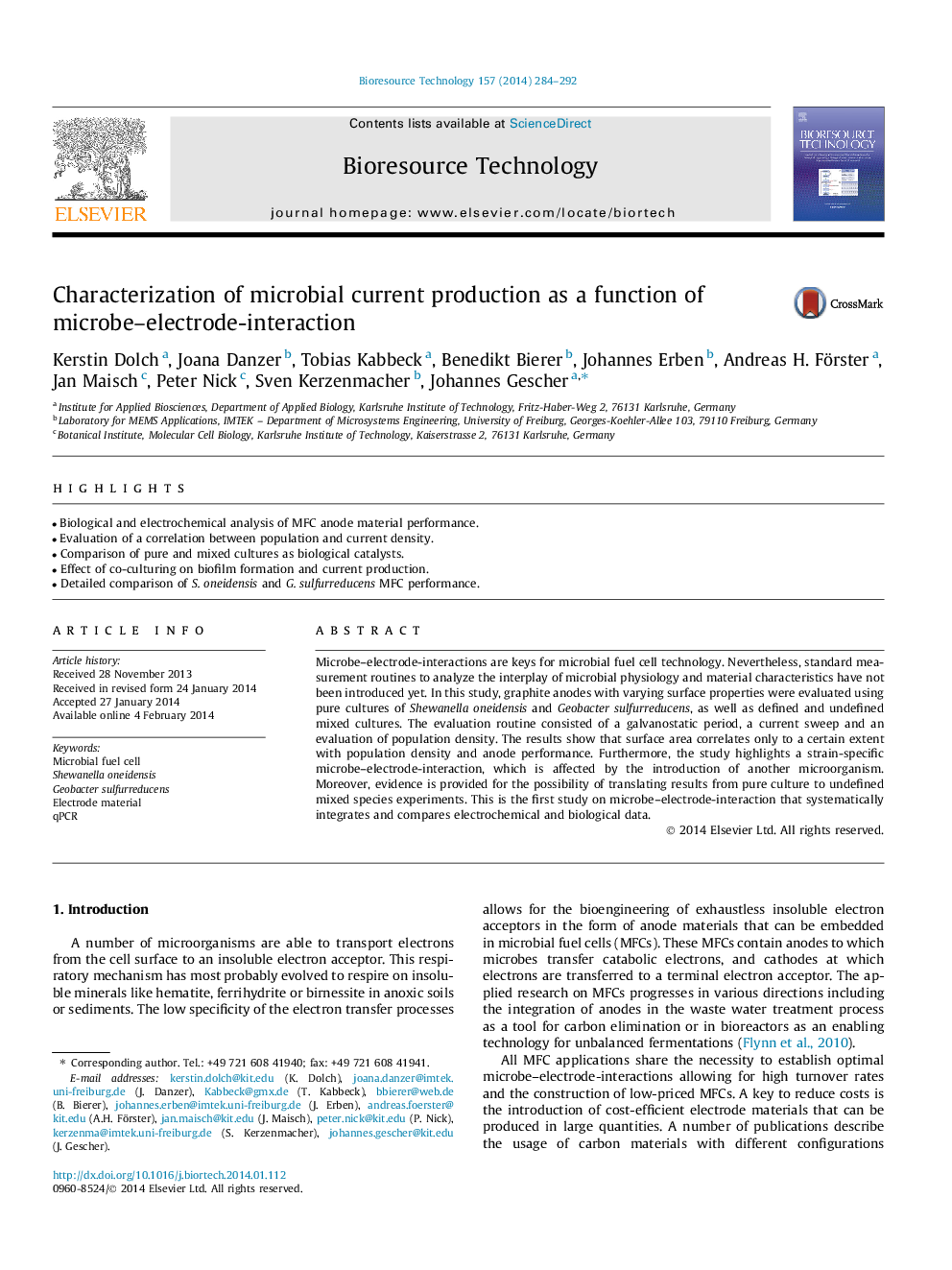| Article ID | Journal | Published Year | Pages | File Type |
|---|---|---|---|---|
| 680926 | Bioresource Technology | 2014 | 9 Pages |
•Biological and electrochemical analysis of MFC anode material performance.•Evaluation of a correlation between population and current density.•Comparison of pure and mixed cultures as biological catalysts.•Effect of co-culturing on biofilm formation and current production.•Detailed comparison of S. oneidensis and G. sulfurreducens MFC performance.
Microbe–electrode-interactions are keys for microbial fuel cell technology. Nevertheless, standard measurement routines to analyze the interplay of microbial physiology and material characteristics have not been introduced yet. In this study, graphite anodes with varying surface properties were evaluated using pure cultures of Shewanella oneidensis and Geobacter sulfurreducens, as well as defined and undefined mixed cultures. The evaluation routine consisted of a galvanostatic period, a current sweep and an evaluation of population density. The results show that surface area correlates only to a certain extent with population density and anode performance. Furthermore, the study highlights a strain-specific microbe–electrode-interaction, which is affected by the introduction of another microorganism. Moreover, evidence is provided for the possibility of translating results from pure culture to undefined mixed species experiments. This is the first study on microbe–electrode-interaction that systematically integrates and compares electrochemical and biological data.
